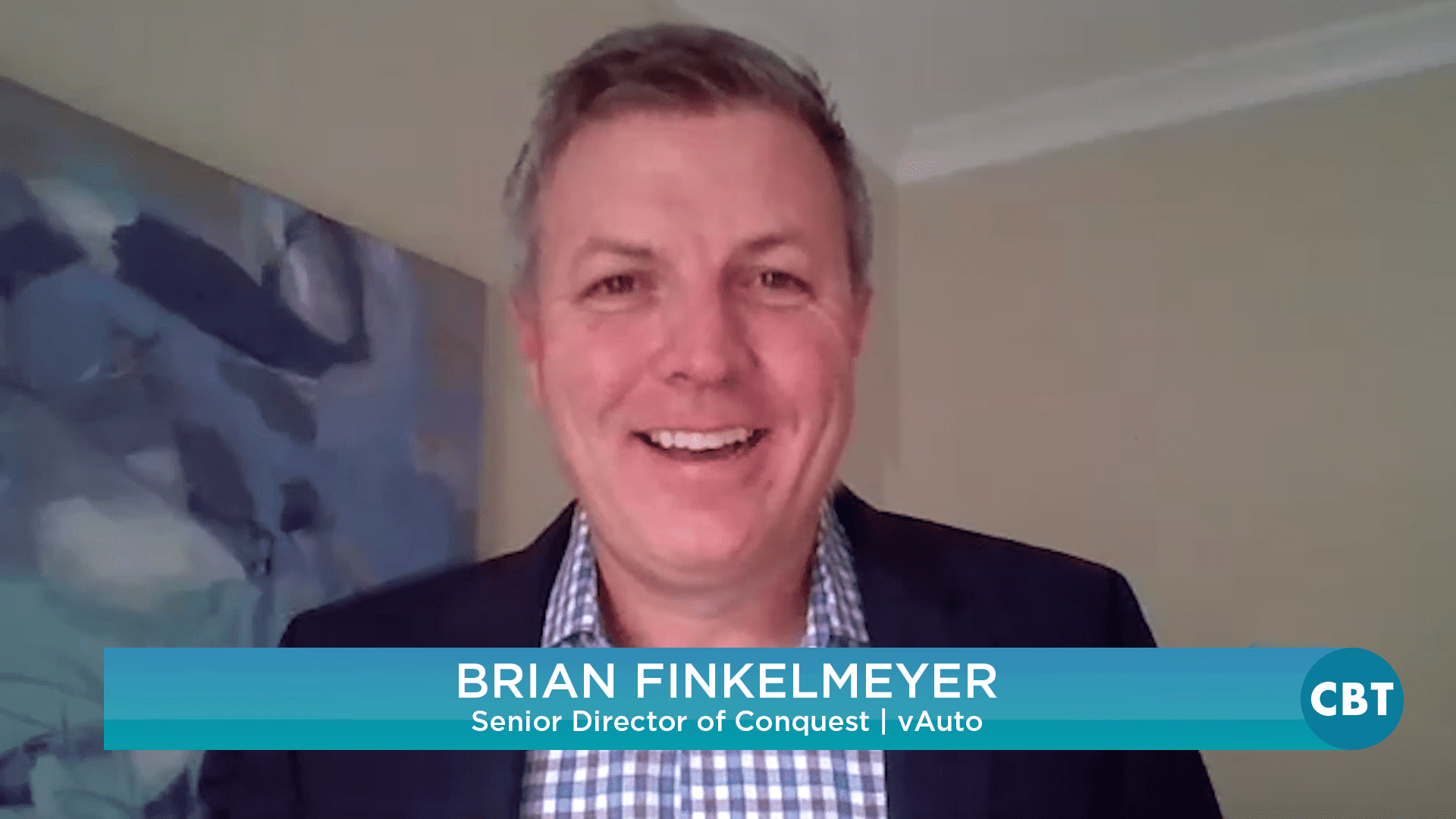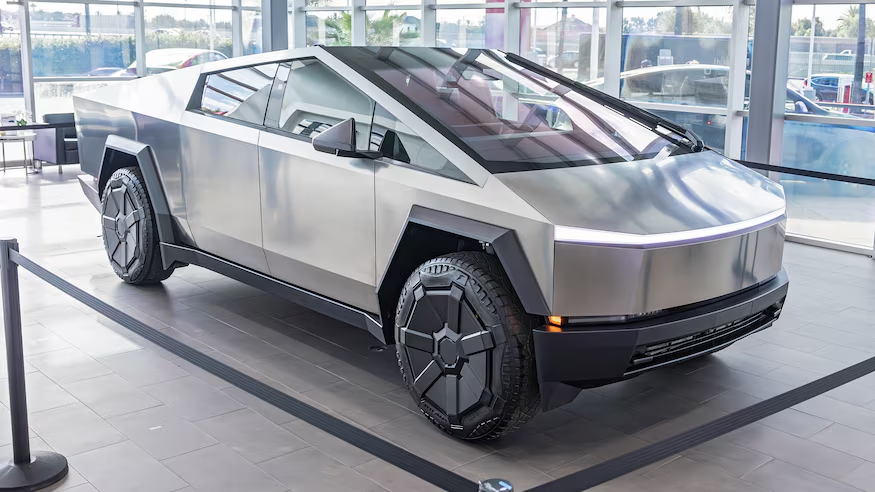On today’s show, we’re pleased to welcome back Brian Finkelmeyer, Senior Director of Conquest for vAuto, an innovative solutions company for your dealership’s new and used vehicle operations. Visit booth #2316C at this year’s upcoming NADA Show to hear more from Brain and the vAuto team.
Jim F.: Hey everyone. Jim Fitzpatrick with CBT News. Thanks so much for joining us today. Today we’re very happy to have with us Mr. Brian Finkelmeyer. He’s the senior director at Conquest for vAuto. Thanks for joining us, Brian.
Brian F.: Hey Jim, good to see you. Thanks for having me on the show.
Jim F.: Sure. So you’re immersed in new car trends and working with the franchise dealers around the country every day, what’s the outlook for 2020 and the coming years?
Brian F.: You know, Jim, I think the last few years, although the headlines in the USA today and automotive news oftentimes talk about the 17 million SAAR, the reality is that the pure retail sales that are flowing through car dealers is actually continued to decline over the past four or five years. Cox Automotive, in fact, is forecasting about another 300,000-400,000 units of contraction here in 2020 as retail’s going to become a little bit softer.
Brian F.: And the big buzzword, we’ve had “autonomous” and “electric” and all these buzzwords and it seems like the buzzword of 2020 is “affordability” as the average monthly car payment now is somewhere north of $570 which seems pretty remarkable. I think these affordability concerns are beginning to hit home. It’s getting tougher to move the needle on the new car business. But there is some bright light, I think, for many dealers, many franchises that 2020 is going to be a really high watermark in terms of new vehicle launches. I believe the industry is expecting about 60 new models to be launched this year and that’s certainly going to drive some demand and traffic the new car dealership operations.
Jim F.: What are the key challenges and opportunities on the horizon for new car dealer from your perspective?
Brian F.: Yeah. You know, Jim, when we look at, as I said, obviously the contraction of the new car market coupled with, if you talk to any new car dealer in the country the first words out of their mouth are going to be, “The continued pressure to try to make any margin on new cars.” And as I think about this, if we really are honest with ourselves, the new car market by and large is a very competitive, commoditized business. If we look across other industries to see how businesses thrive and succeed in a commoditized industry, it’s really around we’re moving cost from your operation and becoming a more efficient producer, provider.
Brian F.: And so I think that’s really where the focus needs to be in 2020, is around how do we do more with less? How are we able to, for example, AutoNation. Last year they reduced their inventories by 7,000 units and were able to, more or less, maintain sales with a tighter day supply. How can we mitigate our exposure to the rising floor plan costs that we’ve seen over the past couple years? I think those are some of the key themes that new car dealers should really be thinking about as we move forward here into this new year.
Jim F.: Yeah. So it continues to be all about efficiencies, right? Because you’re going to get so much money for that new car or, even in the case of the used cars, because now all of a sudden we’re seeing compression take place on the used car side as well. So now it’s really up to the dealer to run the most efficient operation as possible if they plan to make any net profit, right?
Brian F.: Yeah. And I think, historically Jim, a lot of times it’s always struck me that new car dealers have more of a win with muscle versus our type of mindset of bigger inventories, bigger ad budgets, bigger sales teams. And I think, really, the thought process needs to be, we need to invert that and try to figure out how can we do, as I said, more with less I think will be the key for driving profitability for many dealers in 2020.
Jim F.: Yeah, for sure. What are some smart, fresh ways dealers should be thinking about how to manage their inventories as pure retail sales continue to contract?
Brian F.: One of the things, Jim, we’ve been talking with our clients a lot about is this need to be more proactive at managing new cars in particular. It’s often the case that our dealership inventory managers don’t begin to take action until it’s too late. We’ve already spent $2,500 in holding costs. The car’s covered in pollen in the back of the Parts Department.
Brian F.: And so our whole philosophy is really about, understanding on day one when I take in a distressed piece of merchandise, and putting together, just like we would on the used car side of the business, a game plan or an exit strategy for how we’re going to move that new car. And it’s not always just about price, obviously that’s a big piece of it, but we’re having success also on the digital marketing side with executing specific marketing plans against particular units of inventory that we know to be overstocked in the market’s slow moving merchandise. How are we taking proactive action on day one so that we’re not saddled with anywhere from $2,500 to $3,000 in holding costs if we’re not paying close attention?
Jim F.: Yeah, for sure. The way that we operated dealerships in the past is not going to get us across the finish line any longer, right? We’ve got to have a whole new mindset as to the way that we manage inventories. Right?
Brian F.: Absolutely. And we talk a lot about the need for us to adopt more of an investor mindset than a speculator mindset. Speculators tend to make decisions mostly with gut feel and what they think the future is going to be. And investors make decisions mostly with data and rational evidence. And so I think if we can begin to apply some of those principles to how we’re managing our new cars, we can certainly have greater success and, as I said at the beginning, try to make more money by spending less.
Jim F.: Yeah. The notion that you’ve got to have, and you mentioned it earlier, a three month supply of vehicles out there and have the largest inventory of cars for consumers to choose from is just a thing of the past completely. Right?
Brian F.: Yeah. And I think to, Jim, within that the devil’s in the detail and it’s important to understand that on certain model lines, I’m maybe okay to float a little higher than say, a 60 day supply. But if I have seen, over the last 90 days, that I’m not moving many of X model, let’s be really judicious about which combinations we’re bringing into inventory and making darn sure that we’ve got an understanding, if we’ve taken in a slow moving combinations, that we don’t, as I say, there’s two common strategies I see deployed on those cars. One is the strategy of, “I just hope the customer shows up and gets rid of that car from me.” Or the second strategy is, “I hope my OEM comes up with a better incentive.” And I think we can all agree that hope is not the best of strategies. So how do we use that data to be proactive and go out and attack those cars on day one?
Jim F.: So what’s in store for vAuto at New Car Platform Conquest at NADA this year? You guys are working on something.
Brian F.: Yeah. Thanks for asking Jim. We’re really excited. We’ve got a lot of new things that we’re doing within our application really around the themes that I’m talking about, of helping dealers better understand and the ability to look at that inventory more like an investment portfolio. And having that clear insight to those chunks within your inventory that we might call “frozen capital” that is really bogging down and driving the bulk of that monthly floor plan costs.
Brian F.: So I think it’s really two critical things. There needs to be an understanding of what the right cars are that I should be bringing into inventory. But perhaps, even more importantly, is an immediate understanding of the wrong cars that I currently have and all too often I think, we can all agree, that we just don’t pay close enough attention to that and it becomes a situation where we’re beginning to take action after it’s too late.
Jim F.: I’m switching gears a little bit. Should dealers be focused on this digital retailing that seems to be upon us at some level? Is that the future of the auto industry?
Brian F.: You know, it’s really interesting, Jim. I think a few years ago all of us were led to believe that all customers wanted this Amazon experience and that everybody just wanted to click for cars and have them dropped off at their house. And I think there probably is a certain percentage of the population that obviously wants that. But we’ve seen in some of the research we’ve done at Cox Automotive is really that, consumers want the ability to begin their sales process and handle some of those time consuming elements of the purchase experience from the comforts of their home.
Brian F.: But they still see the need and necessity to go to the dealership and test drive the car and get familiar with the product. So I think it’s about really, this whole notion of people just want to buy cars online, I think customers largely want to start their buying process online but I think clearly there’s still going to be a need for brick and mortar locations for customers to go and, as I say, become more familiar with their $30,000 investment they’re looking to make.
Jim F.: So you think this whole Carvana thing is a for a segment of the market, but not in large numbers? At least not yet.
Brian F.: What they have accomplished over there at Carvana is nothing short of extraordinary and I think he’s clearly on the right path of providing consumers with a frictionless experience. And I think you’re right, there’s a certain percentage of the buying public that feels most comfortable doing that but I suspect, and based on kind of what we’ve seen in some of the research is that there’s still a large chunk of the shopper audience that is interested in going and familiarizing themselves before they pull the trigger on a expensive new car.
Jim F.: Brian Finkelmeyer, senior director of Conquest for vAuto, I want to thank you very much for joining us on CBT news. Can’t wait to talk to you again out at NADA. Your booth is always humming along with a thousand dealers around it, so you must be doing something right.
Brian F.: Yeah. Jim, we look forward to having a stop by so we can show you all the latest and greatest stuff.
Jim F.: For dealers that are wanting to learn more about Conquest vAuto, stop by and see Brian and his team. I know that you’ll be happy that you did. 2020 is going to be a little bit more of a difficult year for all of us in the industry and you want to get every opportunity you can that’s out there in your marketplace. Even more importantly, run a more efficient dealership at the same time. So vAuto’s got the solution for you. So again, Brian, thanks very much for joining us.
Brian F.: Hey Jim, thanks so much for having me on. Have a good rest of your day.
Jim F.: Okay, thank you.
Thank you for watching the official news source of the retail automotive industry. This has been a JBF Business Media production.









